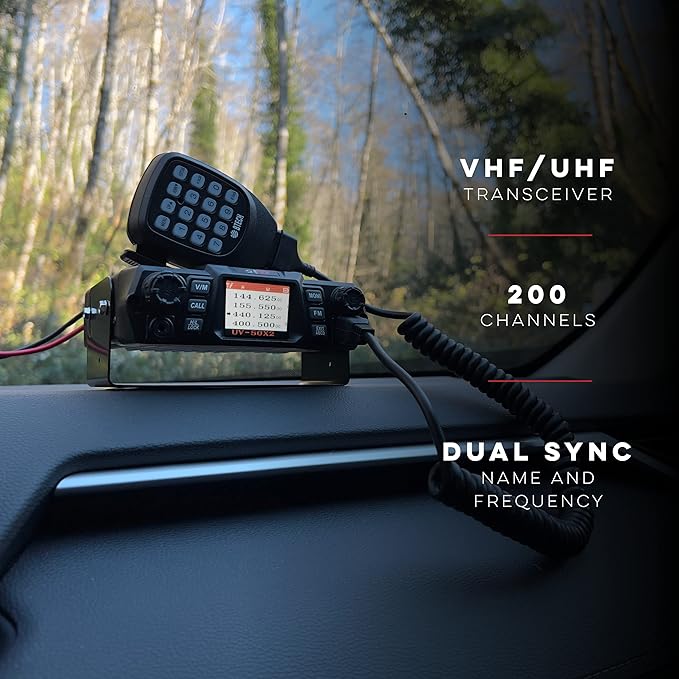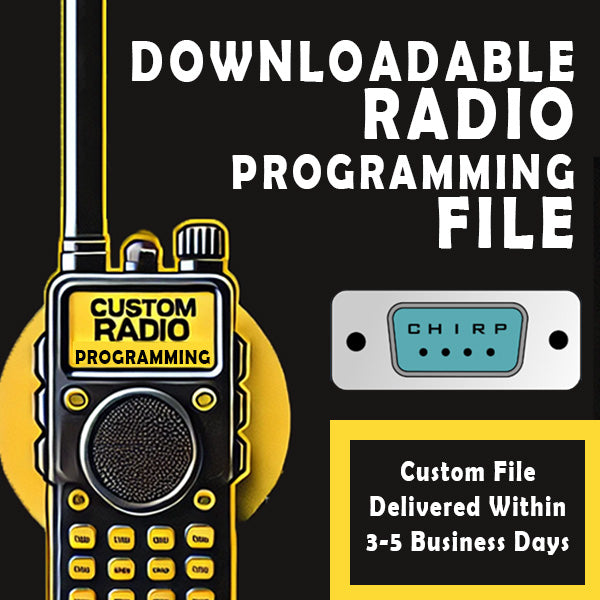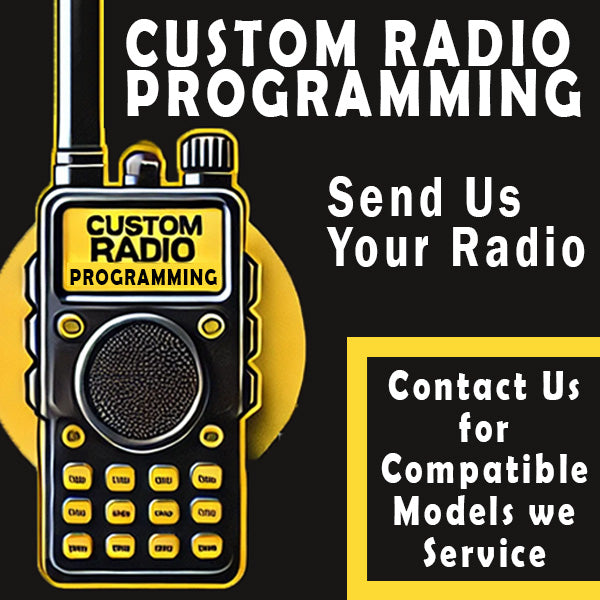In an emergency, reliable communication can mean the difference between safety and chaos. Many preppers look for radios that promise long-range communication, but not all radios are created equal. Some radios, like FRS (walkie-talkies) and CB radios, have severe limitations, while others, like GMRS and repeaters, offer reliable solutions for survival situations.
In this guide, we’ll break down the different types of radios, debunk some common misconceptions, and explain how you can maximize your radio range.
Why FRS Walkie-Talkies Are NOT Reliable
Many people are drawn to FRS (Family Radio Service) radios because they are widely available at big box stores and promise impressive range—sometimes as much as 35 miles on the packaging. However, these claims are misleading.
- Limited Power & Antenna – FRS radios operate at very low power (typically 0.5 to 2 watts), and their antennas are fixed, meaning they can't be upgraded for better performance.
- No Access to Repeaters – Since they can't use repeaters, their signals are line-of-sight only. If there are obstacles like buildings or hills, the signal will drop quickly.
- Real-World Range – In most cases, FRS radios only provide a range of one mile or less, making them nearly useless in an emergency where reliable communication is essential.

CB Radios: Are They Any Better?
CB (Citizen Band) radios operate on HF (High Frequency), specifically the 11-meter band, and allow for both short-range and occasional long-distance communication. However, they come with their own challenges.
Pros of CB Radios:
✅ No license required
✅ Can sometimes propagate long distances via the ionosphere
✅ Popular among truckers for road conditions
Cons of CB Radios:
❌ Low power output (4 watts AM / 12 watts SSB)
❌ Large antennas required for good performance
❌ Unreliable local communication (range varies wildly based on conditions)
❌ No repeater access
While CB radios can sometimes reach distant locations through skywave propagation, this method is highly unreliable. You might talk to someone several states away while being unable to reach a friend 5 miles down the road—not exactly ideal for preppers looking for dependable emergency comms.

Ham Radio HF Bands: Not Good for Local Communication
Ham radio is often hyped up as being able to "talk around the world"—and while this is true, it comes with major limitations that make it unsuitable for local emergency communication.
Why HF Bands Are Unreliable for Local Communication
- Random Signal Propagation – HF (High Frequency) signals rely on bouncing off the ionosphere, meaning they could land thousands of miles away or not even reach 10 miles over to your intended contact.
- Unpredictable Conditions – HF communication depends on atmospheric conditions, sunspot cycles, and time of day. You may talk to someone 600 miles away one day, and the next day, your signal could go in a completely different direction.
- Lack of Coverage for a Local Area – Unlike UHF/VHF, which provides consistent coverage in a defined area, HF signals do not blanket a specific region.
HF vs. GMRS for Local Comms
In practical terms, HF radio does not provide reliable local communication. While you may occasionally be able to reach across state lines, HF is not dependable for talking to someone across town or even 10 miles away. In contrast:
- GMRS with repeaters allows you to cover 50+ miles in a predictable way.
- UHF/VHF signals (like GMRS and ham 2m/70cm bands) are far more reliable for local comms.
For a prepper looking to stay in touch with family, neighbors, or a survival group, HF is not the answer. GMRS, with its repeater access and higher power limits, is the far superior option for reliable, local emergency communication.

How Does Radio Range Really Work?
A common question is: "Which radio can go 100 miles?" The truth is, radio range isn’t a fixed number—it depends on several factors:
Key Factors That Affect Radio Range
- Frequency Band – UHF (Ultra High Frequency) and VHF (Very High Frequency) radios are best for local communication, while HF (High Frequency) can travel long distances unpredictably.
- Obstacles – Mountains, buildings, and dense forests can block signals, especially on UHF/VHF.
- Power Output – Higher wattage can help, but it's not the only factor. Even a 50-watt radio won’t work well if the antenna is poorly placed.
- Antenna Height – One of the most critical factors. The higher the antenna, the farther your signal can travel.
- Repeater Use – Repeaters extend range significantly by rebroadcasting your signal from an elevated position.
Why GMRS & Repeaters Are the Best Choice for Preppers
GMRS (General Mobile Radio Service) operates on UHF and offers a powerful, reliable option for preppers who need consistent local communication.
Advantages of GMRS Radios:
✅ 50-watt power limit (compared to 2 watts on FRS)
✅ External antennas allowed (huge range improvement)
✅ Access to repeaters (extends communication to 50+ miles)
✅ Clear and reliable within a local area
The Importance of Repeaters
Repeaters take an incoming signal and retransmit it at higher power from an elevated position (e.g., a mountaintop or tall building). This overcomes obstacles like trees and buildings, extending your range far beyond what a standard handheld radio can achieve.
For example, a handheld GMRS radio with only 5 watts might have a direct range of 2-6 miles. But if you connect to a GMRS repeater positioned on a high point, you could easily communicate 50 miles away or more.

Final Thoughts: The Best Emergency Radio for Preppers
If you're serious about prepping, you need a radio system that is:
✅ Reliable – Works every time, not just when atmospheric conditions are right.
✅ Local – Lets you reach people nearby, not just random signals across the country.
✅ Expandable – Allows for more power, better antennas, and repeater use.
That’s why GMRS with repeater access is the best option for preppers. Unlike FRS and CB radios, it offers consistent and clear local communication, and unlike HF ham radio, it’s not dependent on unpredictable skywave propagation.
If you're interested in getting a GMRS radio pre-programmed for your area, I offer a custom programming service to ensure your radio is ready to go when you need it.
Stay prepared, stay connected, and keep your communications strong!
To learn more, you can also check out this video on our YouTube Channel.










